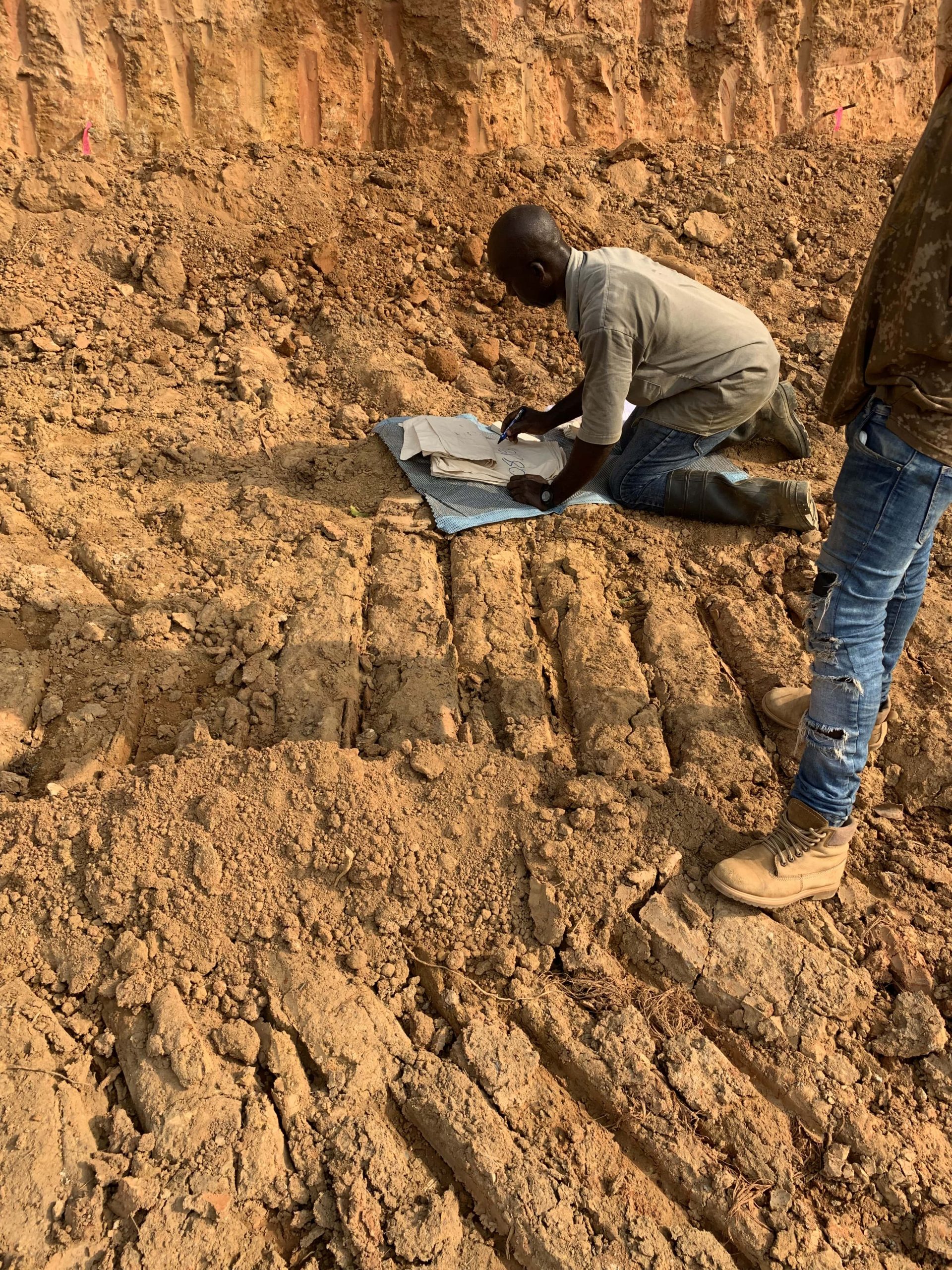This report provides a detailed overview of Goldax Ghana Limited’s small-scale mining concessions located in Gyampomani, Fanteakwa District, Eastern Region, Ghana. The project covers 250 acres of land divided into 10 small-scale mining concessions by the Ghana Mineral Commission. Since 2019, Goldax staff have conducted extensive exploration activities, including structural analysis, field mapping, and sampling, leading to significant resource upgrades. The deposit is hosted within gravel beds and lateritic soil overburden, with a total gold resource of 21,875 ounces (oz) identified to date.
Location and Concessions
The project is located in Gyampomani, Fanteakwa District, Eastern Region, Ghana. Goldax Ghana Limited owns 250 acres of land, which has been divided into 10 small-scale mining concessions by the Ghana Mineral Commission. These concessions are strictly designated for small-scale mining activities. The concessions are as follows:
- Long-Life Mining Enterprise
- Kaba Kaba Mining Enterprise
- Win-Win Mining Enterprise
- Ihil Mining Enterprise
- Gold-Forever Mining Enterprise
- Joefield Mining Enterprise
- Gold-Winners Mining Enterprise
- Olivia Mining Enterprise
- Dome Mining Enterprise
- Forever Riches Mining Enterprise
Geological Setting
The gold deposit is located within gravel beds with an approximate thickness of 1.5 meters, overlain by lateritic soil overburden with an average thickness of 1.37 meters. The geological setting is favorable for gold mineralization, with the gravel beds hosting the primary gold resource.

EXPLORATION ACTIVITIES
Since 2019, Goldax staff have conducted the following exploration activities across the concessions:
General Sampling: Collection of samples from surface and subsurface materials to assess gold content.
Small-Scale Miners’ Pit Sampling: Extensive sampling in pits operated by small-scale miners to gather additional data and validate resource estimates.
Detailed analysis of the deposit’s geological structures to understand the controls on gold mineralization.
Comprehensive mapping of the concession areas to identify key geological features and mineralization trends.
RESOURCE ESTIMATION
The exploration activities have resulted in significant upgrades to the gold resource estimates. The current resource estimates are as follows:
Total Gold Resource: 21,875 ounces (oz).
13,350 oz of gold.
This category represents the portion of the resource with a higher degree of confidence, based on detailed sampling and analysis.
Mining Proven and Probable Reserves: 11,689.58 oz of gold. This category includes the portion of the resource that is economically viable for extraction, based on current mining and economic conditions.
Methodology
- Samples were collected from both surface and subsurface materials, including gravel beds and lateritic overburden.
- Small-scale miners’ pits were sampled extensively to ensure comprehensive coverage of the deposit.
- All samples were analyzed using industry-standard methods to determine gold content.
- Resources were classified into “measured,” “indicated,” and “inferred” categories based on the level of confidence in the data.
- Proven and probable reserves were determined based on economic viability and mining feasibility studies.
- The Goldax concessions host a significant gold resource of 21,875 oz, with a substantial portion falling into the higher-confidence categories.
- The gravel beds, with a thickness of 1.5 meters, are the primary host of the gold resource.
- The lateritic soil overburden, with an average thickness of 1.37 meters, presents a manageable overburden for mining operations.
The exploration activities conducted since 2019 have successfully upgraded the resource estimates for the Goldax concessions. The deposit contains a robust gold resource, with a significant portion classified as measured, indicated, and proven/probable reserves.
- Further Exploration: Continue exploration activities to potentially expand the resource base, particularly in areas with limited data.
- Feasibility Studies: Conduct detailed feasibility studies to assess the economic viability of mining the proven and probable reserves.
- Community Engagement: Maintain collaboration with small-scale miners to ensure sustainable and mutually beneficial mining practices.
- Environmental Assessment: Conduct environmental impact assessments to ensure responsible mining practices and minimize environmental impact.
- Regulatory Compliance: Ensure all mining activities comply with Ghana Mineral Commission regulations and guidelines for small-scale mining.
